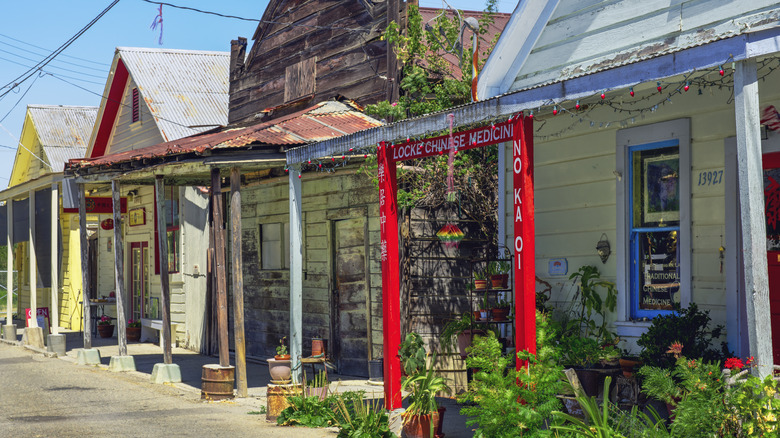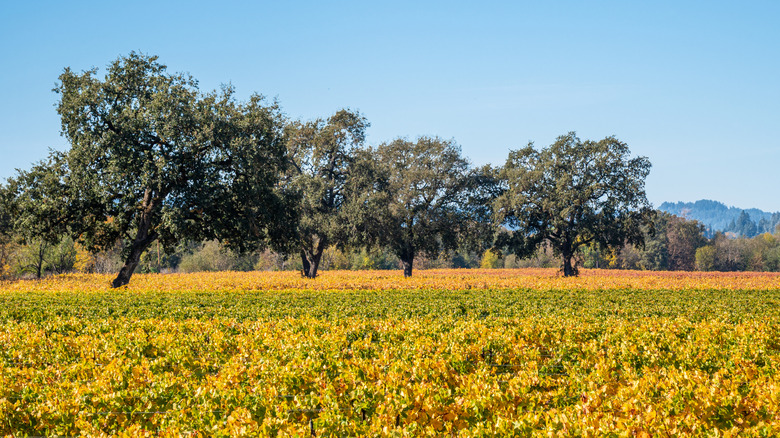
Walnut Grove is a little town nestled in the Sacramento-San Joaquin Delta in the wide, flat farmland of central California, just 30 miles south of Sacramento, a city known as America's farm-to-fork capital, and 1.5 hours northeast of San Francisco. For Chinese and Japanese immigrants during the 1800s and early 1900s, it was home. They built railroads, worked seasonal agricultural jobs, and established communities. There are its namesake crop, walnut groves, although the delta's diverse agricultural core
also produces rice, tomatoes, chickens, asparagus, wine, and even caviar. Bartlett Pears, originally from England, also thrived in the Delta under the careful cultivation of Asian agriculturalists.
Originally, the Sacramento and Joaquin valleys were home to half of California's Native American tribes, who practiced regenerative farming, i.e., sustainably cultivating and harvesting natural resources from fruit to fish. In the mid-1800s, Walnut Grove was founded as a steamship stop along the Sacramento River and settled in part by retired miners who had given up the gold rush. Soon, it evolved into a bustling agricultural port. The town spans the river, and the East side was traditionally inhabited by blue-collar workers. Alternatively, the West side was a wealthy suburb where residents called themselves "the Pearistocracy."
Now, Walnut Grove is considered a "legacy town," with a National Historic District and rare examples of Asian architecture from the Japanese community that once lived here, as well as a Chinatown built by the Chinese agricultural workers who built levees and worked in the fields and orchards. There are museums, historic homes, and lovely gardens throughout the Sacramento-San Joaquin Delta today, but Walnut Grove also serves to remind visitors of some of America's darker sides of history, when Japanese-Americans were incarcerated in camps during World War II and forced to leave homes and businesses behind.
Read more: 15 Underrated Vineyards To Visit In California
Chinese And Japanese Culture Is Woven Into Walnut Grove

After a massive fire in 1915 destroyed the original Chinatown, some Chinese residents preserved their heritage and history with a new Chinatown known as Locke. In the meantime, some Chinese remained to rebuild the original Chinatown, and some of the local Japanese moved a block north to establish "Nihonmachi," or Japantown.
East of the river, the Chinese Historic District is roughly bordered by River Road, C Street, Tyler Street, and Bridge Street. Locke's Dai Loy Gambling House, built in 1915, hosted illegal betting games until it was shut down in the 1950s. Now a free museum, it preserves the original gambling room with tables, photos, and relics from the Chinese-American experience in the Delta. Next door, the Locke Boarding House, built in 1909 to house railroad workers, was eventually purchased by a Japanese family who operated it for more than two decades until they were incarcerated during World War II and never returned. Today, it's operated by the California State Park System and is free to visit. Steps away, the Jan Ying Museum offers cultural exhibits, while historic Al's, a bar and restaurant that modern visitors call "a hidden gem." Created in 1915 by Chinese immigrant Lee Bing, Al's serves up steak sandwiches and bolognese with a stiff old fashioned.
The Japanese-American Historic District is bounded by the Sacramento River, C Street, Tyler Street, and Winnie Street. After the Chinese Exclusion Act of 1882, Japanese immigrants became the new source of labor for farms and mines. In 1896, a noodle shop became the town's first Japanese business. Although no longer operational, the noodle shop building and other historic buildings in the district offer a fascinating glimpse into early Japanese-American life, and you can visit sites like the 1916 Kawamura Barber Shop and the 1927 Buddhist church.
Filling Your Day With Walnut Grove's Outdoor Thrills

Nestled in the heart of the Sacramento-San Joaquin River Delta, along one of America's Scenic Byways (SR 160), just over 30 miles from Stockton Municipal Airport and about 38 miles to Sacramento International, Walnut Grove offers a vibrant road trip stop and a rich blend of riverfront charm and outdoor recreation. If you're into boating, fishing, scenic drives, wine tasting, or birdwatching, you can tap into it all at Walnut Grove. The Delta Meadows Park Property has hiking and nature trails, plus an abundance of wildlife, plus the area is part of the Pacific Flyway, so be on the lookout for migratory birds. The Consumnes River Preserve has free launch points for non-motorized watercraft as well as four miles of trails and a sandhill crane habitat.
The Sacramento River literally splits the town, and you can launch paddleboards or kayaks from public docks and marinas in the area, like Ko-Ket RV Resort and Delta Bay Marina, where you can also rent paddleboards or rent a pontoon at Sac Recreation Rentals. The river contains bass, catfish, and bluegill, so you can fish from shore or a boat.
Take a break at Tony's Place, a welcoming bar and restaurant open daily at 10 a.m. Tony's serves up a variety of hearty meals like prime rib and fish 'n chips, as well as "Tony's Famous Portuguese Beans," a traveler's favorite. Take a peek at the Italian Renaissance-style villa known as the Grand Island Mansion, an old fruit-fortune home now reserved for events such as weddings. Nearby, the Grand Island Vineyard is open to the public for tastings and a tour. Walnut Grove is only 20 miles away from California's best-kept secret wine region, Lodi, a quick and gorgeous detour from a road trip through California's many diverse wine countries.
Ready to discover more hidden gems and expert travel tips? Subscribe to our free newsletter for access to the world's best-kept travel secrets.
Read the original article on Islands.












